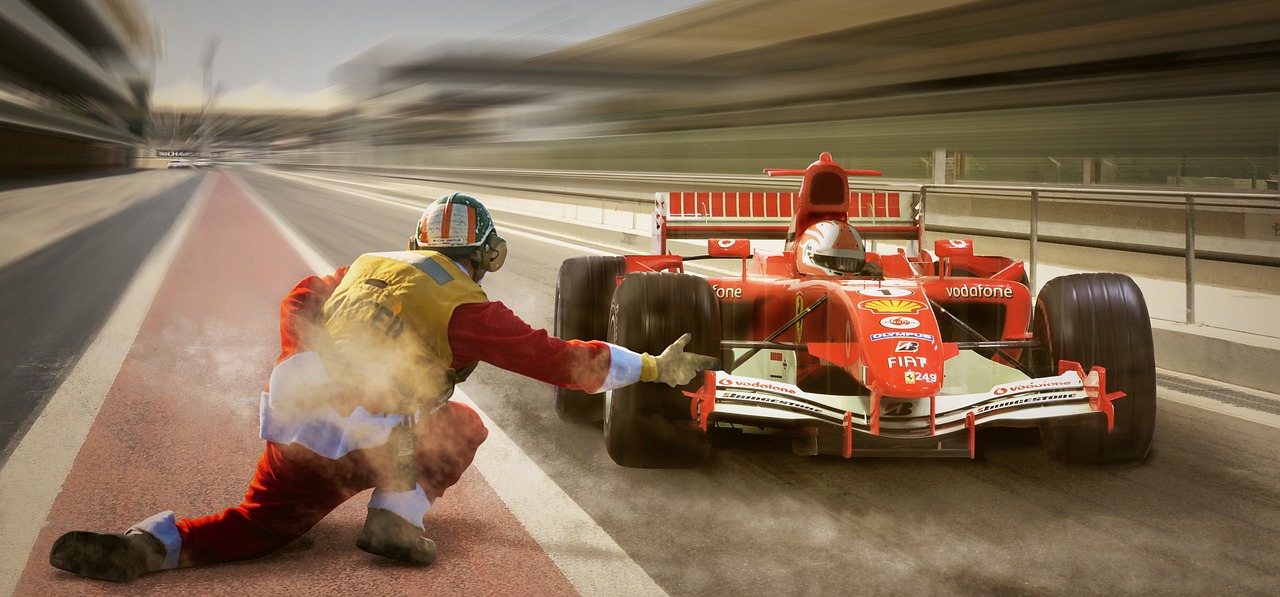Ever found yourself curious when you hear that roar of engines and see colorful cars flying around sharp turns at over 200 mph (300 km/h)? 🏎️ Formula 1 has a magnetism that pulls in millions of fans worldwide, even those who don’t quite get all the ins and outs of the sport. If that sounds like you, you’re in the right place!
Let’s break down this incredible world together. We’ll understand how races work, the rules, what goes on behind the scenes, and what makes this sport so captivating. Get ready to hit the track with your foot on the gas, heading straight into the world of F1!
What Exactly Is Formula 1?
Formula 1, or F1, is the most prestigious category in global motorsport. It brings together the most sophisticated car manufacturers and the most skilled drivers on the planet in a competition packed with speed, strategy, and pure emotion.
The championship is organized by the FIA (Fédération Internationale de l’Automobile) and happens every year, usually from March to December. Each season features about 20 to 24 races, called “Grands Prix” (or “GPs”), held in different countries.
These races take place on closed circuits. Some are tracks built just for F1 (like Interlagos in Brazil), while others are temporary street circuits, like the famous Monaco GP.
F1 is more than just racing: it’s about **cutting-edge technology, top-tier engineering, and it’s a national obsession** in many countries. Its cars are the fastest and most advanced ever created for the track.
With millions of spectators watching live and billions of dollars invested, F1 is a truly global spectacle. 🌍
How Do the Races Work?
Each Grand Prix weekend is split into three main parts: practice sessions, qualifying, and the main race.
- Practice Sessions: These happen on Friday and Saturday. Drivers use this time to get familiar with the track, fine-tune their cars, and test different strategies.
- Qualifying: Held on Saturday, this session decides the starting order for Sunday’s race. The fastest driver gets to start from “pole position” (the very front).
- The Race: This is the big event on Sunday. The goal is to complete a set number of laps in the shortest time possible.
At the end of the race, the top 10 finishers score points. The driver who collects the most points by the end of the season wins the world championship. 🏆
On top of that, there’s a competition between the teams (constructors), like Ferrari, Mercedes, and Red Bull. They also score points and battle for their own team championship title.
Who Are the Drivers and Teams?
F1 is famous for its legendary rivalries and charismatic heroes. Drivers like **Lewis Hamilton, Max Verstappen, and Fernando Alonso** are admired not just for their skill, but also for the stories they carry.
Each team has two drivers. Some of the most famous teams include:
- Ferrari: The most traditional F1 team, with a massive, passionate fanbase.
- Mercedes: Dominated much of the last decade with Hamilton.
- Red Bull: Currently one of the strongest teams, with Verstappen leading the charge.
- McLaren and Alpine: Historic teams fighting to get back to the top.
The mix of talent, technology, and strategy between teams and drivers is what makes every race so unpredictable.
What Are the Main Rules?
While it seems simple – whoever finishes first wins – F1 has pretty detailed rules. Here are some of the most important ones:
- Tire Limits: Drivers can only use a limited number of tire compounds per race.
- DRS Use: This system opens a part of the rear wing to gain speed, but it can only be used in specific zones on the track and under certain conditions (like being close behind another car).
- Penalties: Collisions between cars, dangerous overtakes, or going off track can lead to penalties that affect a driver’s time or final position.
Technical regulations also limit what teams can do in terms of car design, which helps keep the competition balanced.
How Do F1 Drivers Train?
Formula 1 drivers are elite athletes. Their preparation goes way beyond just driving well.
- Physical Fitness: They face extremely high G-forces during corners, which demands incredibly strong necks, arms, and core muscles.
- Lightning-Fast Reflexes: They need to react in milliseconds to any unexpected situation.
- Mental Training: The pressure is immense, so focus and emotional control are absolutely crucial.
On top of all that, drivers spend hours in simulators, studying every curve and planning their strategies with engineers and strategists.
Why Does F1 Spark So Much Passion?
Watching an F1 race is like being on a rollercoaster of emotions. The combination of speed, risk, strategy, and rivalry grabs your attention like few other sports can.
But it’s more than that: F1 creates stories. Every driver has a journey, every race has its drama, and every season has its heroes and villains.
For many, cheering for a team or driver is just like cheering for a football (soccer) team: it’s pure passion, tradition, and raw emotion.
Plus, the look of the cars, the sound of the engines, the iconic circuits, and its global presence make Formula 1 a visual and cultural spectacle. 🌐
Conclusion
Stepping into the world of Formula 1 means opening the door to a universe of adrenaline, technology, and pure excitement. Even for beginners, understanding the basic rules, race structure, and driver profiles will make every Grand Prix much more thrilling.
Now that you know the basics of F1, how about picking a driver or team to root for? With every turn, pit stop, and overtake, you’ll feel more and more a part of this captivating world. 🏁
Remember: in Formula 1, just like in life, anything can change in seconds. And that’s what makes this sport so incredible!

